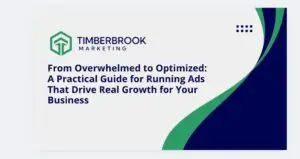As the final quarter of the year, Q4 is a decisive period for businesses aiming to finish strong and capture last-minute gains. With the holiday season driving heightened consumer spending and attention, brands have a unique opportunity to optimize their marketing efforts to boost year-end performance. However, the benefits of a strategic focus in Q4 extend beyond just immediate returns; smart planning during this period can set the groundwork for success in the new year, ensuring that campaigns carry momentum into Q1. By adopting a targeted, intentional approach, businesses can maximize their impact, leveraging seasonal trends and customer engagement to not only hit year-end targets but also create a robust launchpad for future growth.
Analyze Year-to-Date Performance
Before diving into Q4 campaigns, a thorough analysis of year-to-date performance is essential to maximize impact in the final stretch. Reviewing key metrics, such as revenue, engagement, and conversion rates, provides a clear picture of what’s driving results and where adjustments may be needed. This evaluation helps identify the high-performing campaigns that can be amplified, as well as underperforming initiatives that may require refinement or, if necessary, be cut to focus resources effectively. With these insights, brands can set specific, measurable goals for Q4 that are aligned with their year-to-date performance, ensuring that every marketing effort in this pivotal quarter is strategic and data-driven, aimed at optimizing results and paving the way for a successful year-end.
Leverage Seasonal Trends and Holiday Marketing
Holiday-centric campaigns are a powerful way to capture consumer interest during Q4’s peak shopping season. By building campaigns around major holidays like Thanksgiving, Christmas, and New Year’s—as well as key shopping events like Black Friday and Cyber Monday—brands can tap into the heightened demand and festive spirit that drive sales. Limited-time offers and discounts add urgency to these campaigns, making them even more compelling by providing customers with exclusive year-end savings or bundled deals. To ensure a cohesive approach, creating a holiday content calendar is essential. This calendar maps out a steady flow of holiday-themed posts, emails, and promotions, ensuring consistent engagement throughout the season and keeping the brand top-of-mind during these critical periods. Together, these elements create a comprehensive holiday marketing strategy that maximizes both conversions and brand visibility.
Optimize Digital Advertising Strategies
Retargeting high-intent audiences in Q4 is a smart move to drive conversions, especially with customers who have previously engaged with the brand and are more likely to complete a purchase. By reaching out to this warm audience, brands can capitalize on familiarity and nudge these prospects closer to the buying stage, maximizing conversion potential during this high-traffic season. Adjusting budget allocations is also key—shifting funds to the channels that yielded the highest ROI in Q3 allows brands to make data-driven decisions, ensuring resources are directed toward the most effective platforms and holiday-specific trends. Additionally, experimenting with high-converting ad formats like carousel ads, video ads, and shoppable posts can capture attention and make the shopping experience seamless. These formats, optimized for visual storytelling and ease of purchase, align well with consumer behaviors in Q4, enhancing engagement and encouraging quick, holiday-inspired decisions.
Drive Engagement and Build Relationships with Existing Customers
In Q4, strengthening relationships with existing customers is just as important as attracting new ones. Email marketing campaigns can be a powerful tool to re-engage past customers with personalized sequences that highlight exclusive year-end deals tailored to their interests, reminding them of the brand’s value. Loyalty and referral programs further deepen engagement by rewarding customers for their continued support and encouraging them to bring in friends and family, building a community around the brand. Additionally, showing genuine customer appreciation through thank-you messages, holiday greetings, or special offers creates a personal connection and fosters brand loyalty. These gestures make customers feel valued, making them more likely to return in the future and even advocate for the brand within their networks. Together, these strategies turn year-end interactions into meaningful, long-term relationships that extend beyond the holiday season.
Streamline the Buyer Journey for Quick Conversions
A streamlined buyer journey is crucial in Q4, where quick conversions can make all the difference in meeting year-end goals. To minimize cart abandonment, optimizing landing pages and checkout processes is essential, ensuring they are fast, intuitive, and free from distractions. A seamless experience can significantly increase the likelihood of customers completing their purchases without frustration. Incorporating reviews and social proof, such as testimonials and user-generated content, builds trust and credibility, helping to reassure potential buyers of the product’s value and quality. Additionally, limited-time call-to-actions (CTAs) can create a sense of urgency, encouraging visitors to act immediately to avoid missing out on exclusive deals. Together, these elements reduce friction in the buyer journey, helping to turn holiday traffic into final sales and maximize Q4 revenue.
Prepare for a Strong Start in Q1
As Q4 wraps up, collecting and analyzing data from its campaigns is essential for gaining insights that inform future strategies. This data provides a clear picture of what resonated with audiences, allowing brands to refine their tactics and set effective benchmarks for Q1. Armed with these insights, companies can begin planning Q1 content and campaigns, building on what worked well in Q4 and adjusting based on observed trends and performance metrics. Additionally, a retargeting strategy specifically aimed at holiday-season customers can be highly effective in January, using loyalty offers or new product introductions to re-engage those who showed interest in the brand during the holiday rush. By leveraging Q4 data to guide Q1 plans and nurture recent customers, brands can maintain momentum, turning seasonal shoppers into long-term loyalists and setting the stage for a successful new year.
Conclusion
As we enter the final stretch of the year, Q4 presents a crucial opportunity for brands to maximize their efforts—not just to meet year-end targets, but to set up a successful launchpad for Q1. The right strategies, from engaging holiday-centric campaigns to streamlining the buyer journey and analyzing campaign data, can make all the difference in creating a profitable close to the year. Now is the time for brands to evaluate their Q4 marketing plans, identify areas for refinement, and take decisive action to ensure they capture all possible gains from this high-impact period. Timberbrook Marketing is here to help, offering expert guidance in crafting customized campaigns, optimizing digital ads, and designing data-driven strategies that drive immediate results and build momentum into the new year. Whether it’s through strategic retargeting or planning engaging content, Timberbrook Marketing partners with brands to make the most of every opportunity. Take this chance to assess your Q4 approach, make the necessary adjustments, and start the new year strong. Reach out to Timberbrook Marketing to elevate your Q4 efforts and position your brand for a successful year ahead.





